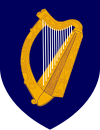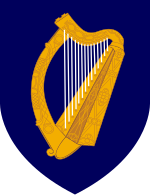Ireland/Traditions
Ireland is a country with rich traditions. The Irish used these to celebrate their history and culture and to come together.
Saint Patrick's Day
- Read the text. Then work on the Reading comprehension tasks.
- Do the vocabulary exercises.
- In the end there is a fun quiz.
St. Patrick’s Day is celebrated on March 17, the anniversary of his death in the fifth century. St. Patrick’s Day 2023 will take place on Friday, March 17. This day has been a religious holiday for over 1,000 years. On St. Patrick’s Day, which falls during the Christian season of Lent, Irish families would traditionally attend church in the morning and celebrate in the afternoon. Lenten prohibitions against the consumption of meat were waived and people would dance, drink and feast–on the traditional meal of Irish bacon and cabbage.
Who Was St. Patrick?
Saint Patrick, who lived during the fifth century, is the patron saint of Ireland and its national apostle. Born in Roman Britain, he was kidnapped and brought to Ireland as a slave at 16. He later escaped, but returned to Ireland and was credited with bringing Christianity to its people.
In the centuries following Patrick’s death (believed to have been on March 17, 461), the mythology surrounding his life became ever more rooted in the Irish culture: Perhaps the most well-known legend of St. Patrick is that he explained the Holy Trinity (Father, Son and Holy Spirit) using the three leaves of a native Irish clover, the shamrock.
When Was the First St. Patrick’s Day Celebrated?
Since around the ninth or 10th century, people in Ireland have been observing the Roman Catholic feast day of St. Patrick on March 17. The first St. Patrick’s Day parade took place not in Ireland but in America. Records show that a St. Patrick’s Day parade was held on March 17, 1601 in a Spanish colony in what is now St. Augustine, Florida.
Over the next years, Irish patriotism among American immigrants flourished, prompting the rise of so-called “Irish Aid” societies like the Friendly Sons of Saint Patrick. Each group would hold annual parades featuring bagpipes (which actually first became popular in the Scottish and British armies) and drums. In 1848, several New York Irish Aid societies decided to unite their parades to form one official New York City St. Patrick’s Day Parade. Today, that parade is the world‘s oldest civilian parade and the largest in the United States, with over 150,000 participants. Each year, nearly 3 million people line the 1.5-mile parade route to watch the procession, which takes more than five hours.
The Chicago River Dyed Green
As Irish immigrants spread out over the United States, other cities developed their own traditions. One of these is Chicago’s annual dyeing of the Chicago River green. The practice started in 1962, when city pollution-control workers used dyes to trace illegal sewage discharges and realized that the green dye might provide a unique way to celebrate the holiday. That year, they released 100 pounds of green vegetable dye into the river–enough to keep it green for a week. Today, in order to minimize environmental damage, only 40 pounds of dye are used, and the river turns green for only several hours.[1]
Reading Comprehension
Getting the facts right. (Tick if they are correct, wrong or not in the text.)
Saint Patrick’s Day is a special day in Ireland only. (!true)(false)(!not in the text)
Saint Patrick lived around the year 500. (!true)(false)(!not in the text)
The world’s largest Saint Patrick’s Day parade was in Dublin in 1995. (!true)(!false)(not in the text)
The Irish Tourist Board were very glad because the parade brought more tourists to New York. (!true)(false)(!not in the text)
The Irish Americans are proud of their traditions. (true)(!false)(!not in the text)
Use of English
What can you do on St. Patrick's day ? Match the words with their corresponding definitions.
| parade | 1 A public procession or march, especially one commemorating a holiday or special event | |
| fireworks | 2 An event or a display where rockets and lights are set off. | |
| costume | 3 a speacial dress | |
| shamrock | 4 three-leaved plant; often pinned on your clothes or used as a logo | |
| leprechaun | 5 magical creatures, said to bring luck | |
| pub | 6 bar or restaurant, often with live music | |
| anniversary | 7 A day that is an exact number of years (to the day) since a given significant event happened. |
Complete the dialogues. Use the simple past or the present perfect. Watch the signal words!
Sue I really like your dress, Jenny.
Jen Oh, thank you. I bought(buy) it yesterday at the new shop that has just opened|'s just opened(open / just).
Bob I’d like to go to the parade. Have you ever been (you ever be) to one?
Ted Yes, of course. Unfortunately there wasn't (not, be) one last year because of COVID.
But I went (go) to one three years ago.
Bob When are you going to phone Bill to invite him for the party, Ted?
Ted Oh, I have already phoned|'ve already phoned (already / phone) her. I did (do) it before before tea.
And I have just done|'ve just done (just/ do) all my homework.
Irish Symbols
- Fact File
- Geography
- History
- Traditions (typical customs and holidays)
- Irish Humour
- Limericks
- Planning a holiday
- ↑ History of St. Patrick’s Day (history.com), shortened and simplified











